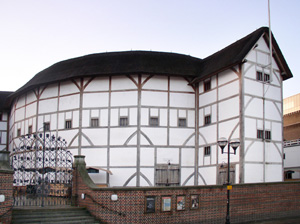Woodlands and forests in Shakespeare’s plays

William Shakespeare grew up in a leafy part of the country, Stratford-upon-Avon, and woodlands and forests were a very important part of many of his plays. Forests were large areas governed by a different set of laws and they could include marshes, bogs, fen, pasture, cultivated land and woodland. Famously, Shakespeare made the "moving" of a woodland a pivotal point in his play 'Macbeth' when Birnam wood "moves" to Dunsinane as soldiers use branches as a camouflage in their assault on Macbeth's castle. But he uses woodland settings in many other plays and the forest carries deeply symbolic meanings - it is a place where he can explore opposites (wild versus civilised); woodlands are places where Shakespeare established temporary relief from a rigid order to which we must all return, and woodlands represent a world to which we can escape - at least for a while.
In 1600, about a third of Britain was covered in forest and daily life, especially in the summer, would have been a very outdoors affair, so Shakespeare's listeners would have been much more aware of the natural world than we are. When Shakespeare uses woodland metaphors these would have had an immediate resonance with his audience. In 'As You Like It' one character says, "I found him under a tree, like a dropped acorn" and in 'Macbeth' the king, Duncan, says, "I have begun to plant thee, and will labour to make thee full of growing."
The Elizabethan theatre itself would have been largely outdoors just like the reconstructed Globe Theatre in London. Many plays have scenes set in woodlands, orchards or parks and in some of them whole sections are based in the forest. For example, in "King Lear" Shakespeare portrays a "blasted heath" and storm scenes which reflect King Lear's state of mind as his daughters drive him mad with rage. This is just one version of the theme that Shakespeare follows - that all humans are vulnerable to forces much bigger than themselves such as storms and forests. Lear's trauma in the play is also a very geographical one with references to map-making, characters have their county names emphasised - Kent and Gloucester - and there are several terrifically detailed descriptions of the natural world. Looking over the cliffs of Dover, Lear says, "The crows and coughs that wing the midway air show scarce so gross as beetles. Halfway down hangs one that gathers sampire ..."
The forest is used by Shakespeare for clandestine activities - often secret marriages or plots to switch identities. It is also often a place of sanctuary. In 'A Midsummer Night's Dream' the woodland is used as a setting for the escapism of the subplot with the fairies Titania and Oberon, as well as the comic play within the play acted by the 'Mechanicals'. But the woodland scenes are much more than just escapism - their portrayal is making an attack on Puritanism and the fairy folk reflect pagan traditions which pre-date the Puritans. Shakespeare strongly links his harmless fairies to the good things of the forest and the freedom and fertility of the natural world. According to the church at the time fairies were evil spirits, whereas Shakespeare makes his fairy characters very positive and unthreatening and part of that appeal is their love of nature and their being at home in the woodland where natural laws prevail.
Shakespeare often associates woodlands with danger and mystery but also they are places of pleasure. As Quince says in A Midsummer Night's Dream, " This green plot shall be our stage."
Comments are closed for this post.
Discussion
Hi. I’ve been told that there is a wood on the edge of Quainton, Bucks, directly on the route of HS2 betweens Quainton and Calvert which will be obliterated.
Do you know of this particular wood? Any information would be most important to our local campaign to protect woodland along the proposed HS2 route.
Thank you.
thank you for this piece, which touches on some of my favorite Shakespearean themes and scenes and reminds me of the summer pleasure here of seeing Shakespeare performed in a redwood grove bttthe Curtain Theatre!
It is a snippet from an article that references this one
https://maddiesshakespeareblog.wordpress.com/2016/04/29/a-walk-through-the-forest/
The note suffers from an abrupt ending
[…] Fairy folk like the mischievous characters Titania and Oberon in a Midsummer Night’s Dream reflect pagan traditions which pre-date the Puritans. Pagans were associated with beliefs in supernatural beings that Christian society gave negative connotations to. Shakespeare strongly links his harmless fairies to the good aspects of the forest and the freedom and fertility (freedom of love) of the natural world. According to the Christian church at the time fairies were considered evil spirits who sought harm on humans, whereas Shakespeare depicts his fairy characters in a very positive and unthreatening way, “and part of that appeal is their love of nature and their being at home in the woodland where natural laws prevail.”(woodlands). […]
A great piece this with a different angle on woodlands

If you are referring to Finemere Wood (which is near Quainton), that is under the aegis of the Buckinghamshire, Berkshire and Oxfordshire Wildlife Trust. Much has been written about this particular woodland, for example,
https://www.bbowt.org.uk/wildlife/nature-matters/high-speed-two
https://www.theguardian.com/uk-news/2015/nov/17/hs2-the-human-cost-of-britains-most-expensive-rail-project
Blogs
15 February, 2020